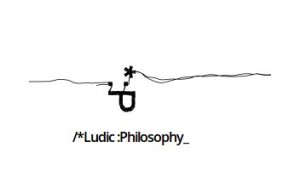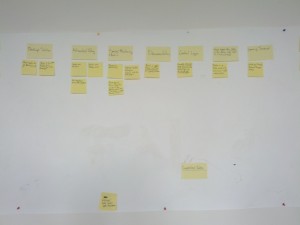
It’s the Ludic Philosophy logo. Using an emoticon makes for a really clean logo that scales well and transmits some of the playfulness that the company is all about.
I’ve found an exciting opportunity to continue building on the software skills I have previously been developing on my own, but now with a real project in a production environment. Ludic Philosophy, GmbH is a start up in Berlin focused on gamification and transmedia. Owned and operated by Dr. Martin Burckhardt, Ludic Philosophy is really on the edge of how people and technology are interacting with one another. It’s all very experimental stuff, and I’m glad I get to be a part of it.
Dr. Burckhardt is facing all the usual challenges that startups, especially ones that are so experimental, have to grapple with; aside from effectively communicating his narrative to potential investors, he is also attempting to stand up and operate a variety of systems with a limited staff and knowledge base. After my first days, I quickly recognized where I could bring value with my sys admin and networking background. Last Friday, I carved out some wall space for myself, grabbed some sticky notes, and got down to organizing my work with the agile techniques I learned at Speakeasy. Once some key processes are in place, I’m hoping to turn my attention to the development side. The main product of Ludic Philosophy, “Twin Komplex”, is a game written in a combination of Ruby on Rails and JavaScript. I’ve already started to look at some of the backend stuff, and I can’t wait to go deeper.
On top of it all, the main offices are located at an old airport called Tempelhof; it was constructed in the 30’s to be a show piece for the Berlin Olympic games. The place is a very haunting tableau of Berlin’s rich history. To be learning what I want to learn from a company exploring the frontiers of the future housed in a giant symbol of the past is pretty intense. Berlin really delivers! I don’t regret coming here for one second.

The Agile process: Once you’ve identified all the things that need some tender loving care, the next step is to start breaking your big tasks into smaller things that are manageable. Sticky notes to the rescue!
Post a Comment